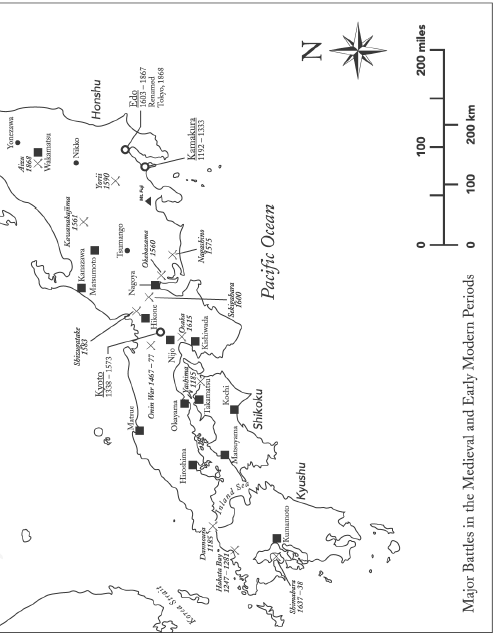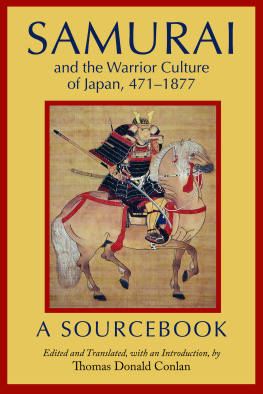Jonathan Clements is the author of many books on East Asian history, including biographies of Empress Wu, Admiral Tg, the statesman Prince Saionji and Coxinga, the Japanese-born pirate king. His acclaimed collection of poetry translations, The Moon in the Pines, is published in paperback as Zen Haiku. He divides his time between London, England and Jyvskyl, Finland. His website is www.muramasaindustries.com
Titles available in the Brief History series
A Brief History of 1917: Russias Year of Revolution
Roy Bainton
A Brief History of the Birth of the Nazis
Nigel Jones
A Brief History of the Circumnavigators
Derek Wilson
A Brief History of the Cold War
John Hughes-Wilson
A Brief History of the Crimean War
Alex Troubetzkoy
A Brief History of the Crusades
Geoffrey Hindley
A Brief History of the Druids
Peter Berresford Ellis
A Brief History of the Dynasties of China
Bamber Gascoigne
A Brief History of the End of the World
Simon Pearson
A Brief History of the English Civil Wars
John Miller
A Brief History of the Future
Oona Strathern
A Brief History of Globalization
Alex MacGillivray
A Brief History of the Great Moghuls
Bamber Gascoigne
A Brief History of the Hundred Years War
Desmond Seward
A Brief History of the Knights Templar
Helen Nicholson
A Brief History of Medieval Warfare
Peter Reid
A Brief History of Misogyny
Jack Holland
A Brief History of Medicine
Paul Strathern
A Brief History of the Normans
Franois Neveux
A Brief History of the Private Lives of the Roman Emperors
Anthony Blond
A Brief History of Science
Thomas Crump
A Brief History of Secret Societies
David V. Barrett
A Brief History of the Age of Steam
Thomas Crump
A Brief History of Stonehenge
Aubrey Burl
A Brief History of Venice
Elizabeth Horodomich
A Brief History of the Vikings
Jonathan Clements
A BRIEF HISTORY OF
THE SAMURAI
The Way of Japans Elite Warriors
JONATHAN
CLEMENTS

Constable & Robinson Ltd
5556 Russell Square
London WC1B 4HP
www.constablerobinson.com
First published in the UK by Robinson, an imprint of Constable & Robinson Ltd, 2010
Copyright Muramasa Industries Ltd, 2010
The right of Jonathan Clements to be identified as the author of this work has been asserted by him in accordance with the Copyright, Designs and Patents Act 1988
All rights reserved. This book is sold subject to the condition that it shall not, by way of trade or otherwise, be lent, re-sold, hired out or otherwise circulated in any form of binding or cover other than that in which it is published and without a similar condition including this condition being imposed on the subsequent purchaser.
A copy of the British Library Cataloguing in Publication data is available from the British Library
UK ISBN: 978-1-84529-947-7
eISBN: 978-1-47210-772-5
1 3 5 7 9 10 8 6 4 2
First published in the United States in 2010 by Running Press Book Publishers
All rights reserved under the Pan-American and International Copyright Conventions
This book may not be reproduced in whole or in part, in any form or by any means, electronic or mechanical, including photocopying, recording or by any information or storage retrieval system, now known or hereafter invented, without written permission from the publisher.
9 8 7 6 5 4 3 2 1
Digit on the right indicates the number of this printing
US Library of Congress Control Number: 2009935109
US ISBN 978-0-7624-3850-1
Running Press Book Publishers
2300 Chestnut Street
Philadelphia, PA 19103-4371
Visit us on the web!
www.runningpress.com
Typeset by TW Typesetting, Plymouth, Devon Printed and bound in the EU
For
Dominic Clements
CONTENTS
Chapter 9 Twilight of the Samurai: The Tokugawa in Decline
ACKNOWLEDGEMENTS
I would like to thank my commissioning editor Leo Hollis and all at Constable & Robinson, my agent Chelsey Fox of Fox & Howard, Sharon Gosling, Adam Newell, Ellis Tinios, Alex and Reiko McLaren, Jaqueline Mitchell, Tamamuro Motoko, Stephen Turnbull and the staff of the library at the London School of Oriental and African Studies. And, as ever, my wife Kati, who celebrated this books completion by fighting for four days at a temple on Shikoku: fit to confront a demon or a god, she was worth a thousand warriors. (Heike Monogatari, IX: 4)




Emperors of Japan in the 6th and 7th centuries

The Minamato

The Emperors of Japan in the 12th Century

The Tokugawa Shogunate
INTRODUCTION
The samurai were the warrior caste of medieval Japan, a class of powerful mounted soldiers who rose to power as retainers of feudal lords and the military arm of the imperial court, before establishing a new national order. Like the Vikings of Scandinavia they were initially men with nothing to lose, who won land at the point of a sword. Like the knights of Crusader Europe, they went on to export their military prowess in a handful of foreign expeditions. But contrary to a common modern misconception, the samurai were not a solely Japanese creation. Throughout Japanese history, the great unspoken influences are China and its Korean vassal kingdom, presented variously as a threat to be fought off, a source of culture and precedent, a source of refugee aristocrats and wealth, or trade. It was the Chinese Emperor, or rather Chinas Mongol conqueror, Khubilai Khan, who inadvertently united the samurai in their finest hour the spirited defence of Japan in the thirteenth century. It was the prospect of conquering China that led the samurai in their ill-fated invasion of Korea in the late sixteenth century. But a millennium earlier, the first samurai were also created in reaction to a military system borrowed from China, which foundered when exported to Japanese terrain. Their image owes much of its origin to frontier wars in what is now considered to be Japanese territory, but at the time was distinctly foreign. However, despite periodic contacts abroad to define and redefine their self-image, the bulk of the battles of the samurai over a 700-year period were fought among themselves. Held up to modern readers as a quintessential element of the soul of Japan, their system was brought crashing down by the onset of modernity itself.
Next page






















